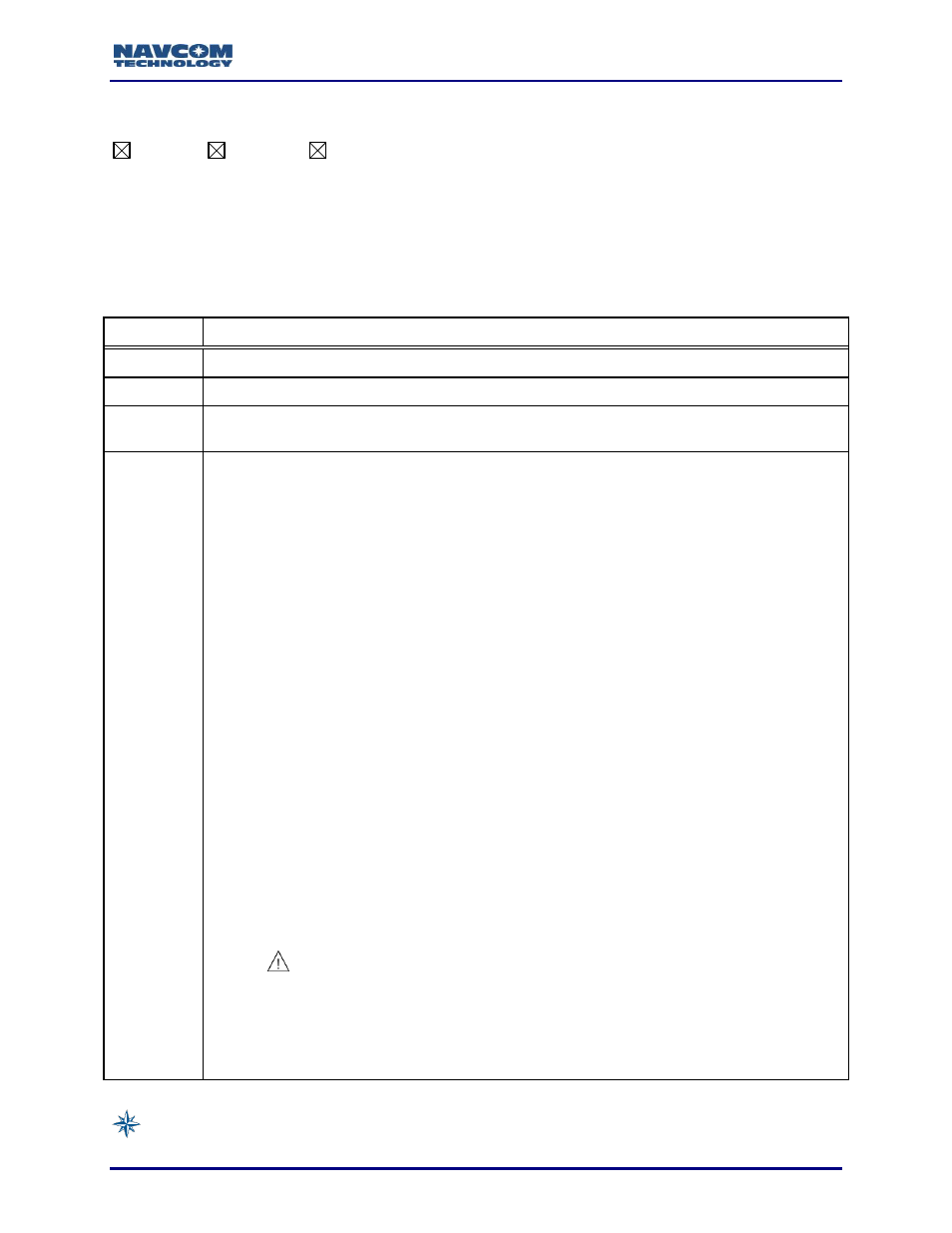Passthru (ascii) – NavCom Sapphire Rev.J User Manual
Page 184

Sapphire Technical Reference Manual Rev. J
184
1.127
PASSTHRU (ASCII)
SF-3050
Sapphire
SF-3040
This command is used to enable a data pass through from one serial port to another. Once a
pass through session is enabled between two ports, all input data received on one port will be
output to the other port with no processing performed by the receiver. This continues until a
pass through OFF command is received on any port. During the time that pass through is
enabled, all receiver messages scheduled to be output to either port are disabled. Only one
pass through can be configured at a time. If a pass through ON command is received while a
pass through is already enabled, the new request will receive an NAK.
Command:
[PASSTHRU] on_off, port_dst, port_src
Parameter
Definition
on_off
Keyword that turns pass through mode on and off
port_dst
Keyword that identifies the destination data port to be used for the output stream
(refer to Table 74)
port_src
Optional keyword that identifies the source data port to be used for the output stream. If not
specified, the port on which the command is input is used. SF-3050 ports FH1 and FH2 do
not support PASSTHRU (refer to Table 74).
If ONTIME is selected, and the interval specified is finer than the rate at
which the data contained in the message are updated, then the message
output interval will average out to the specified interval, rather than occurring
exactly at the specified interval. For example, if the navigation computation
rate is set to
10 Hz, but the PVT1B message is scheduled to be output ONTIME every
5.12 seconds, then the interval between consecutive PVT1B messages will
dither between 5.10 seconds and 5.20 seconds, averaging out to 5.12
seconds.
An example of data that would likely be scheduled ONCHANGE is GPS
satellite ephemeris data. Ephemeris data normally change every two hours
but are received from the satellites every 30 seconds.
EPHEM1B is a special case message. It can be output for the entire list of
satellites (tracked or not) or specified for a specific satellite. These two
special cases are typically used at base station startup or hub software
startup in a network solution. The ability to poll the receiver for a specific
PRN’s ephemeris allows the network to easily recover from data outages that
might occur on an Ethernet link, for example. The third (and normal usage)
case is to schedule EPHEM1B “Onchange.” In this mode, the receiver
unpacks and passes on satellite ephemerides as they are received from the
satellite (the normal, ongoing operational condition).
When incorporated into an end-user program, do not poll the receiver
for the complete EPHEM1B list more than once every 60 seconds.
End-user programs can request the entire EPHEM1
B list “Once” and
immediately follow this command with “Onchange.”
Error! No bookmark
name given.
Default: OFF
